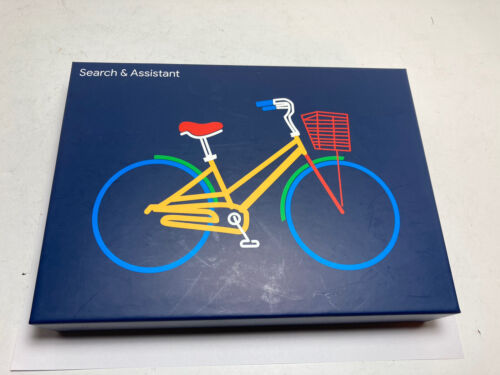
Mason Dixon Knitting's website is hosted by Yankee Kay Gardiner, Tennessean Ann Shayne and two knitting instructors. Both are experts on their respective fields. The website features a blog, Field guides for knitters, and pattern books. Both of these experts have written hundreds of articles and videos to help knitters find the best projects for their skills.
Kay and Ann
It doesn't matter if your skill level is beginner or expert. You can learn how knit with the help and guidance of Tennessean Ann Shayne. Mason Dixon Knitting is a web site that showcases their knitting projects.
The two women, also friends, collaborated on two knitting book projects. Since then, the blog has become a full-fledged shopfront that sells knitting yarn and other supplies. The website's name is controversial because it contains racist connotations. Despite this, the authors kept their promise to make the website accessible to all knitters.

Kay and Ann created a book that mixes humor and practical advice to make knitting a more enjoyable hobby. These patterns are great, and they include helpful advice from the knitting world. Kay Gardiner (Kay Gardiner) and Ann Shayne (Ann Shayne) have been rock stars in the knitting community, and their blog is filled with tips and advice.
Field guides for knitters
These books provide valuable tips and information for knitters. Field Guides provide knitting instructions for everything, from sweaters and accessories. Some of the more unusual patterns include slip-stitch sweaters and cabled sweaters. You can also find information on colorwork, stranded and other techniques.
Field Guide No. 13: The Field Guide No. Five projects are offered in the Big Joy field guide using Rowan Big Wool. The field guides include a few projects that may be of interest to you.
Field Guides: This collection features knitting patterns by Ann Shayne and Kay Gardiner. These books include essays and tips for knitting. These guides can easily be carried around in a bag or backpack. Many of the books come with a download code which unlocks more patterns.

Pattern books
Yankee Kay Gardiner (Tennessean Ann Shayne) are the authors for Mason Dixon knitting pattern books. They also have a website. Kay Gardiner, an expert knitter, and Ann Shayne, an instructor. They have published three knitting patterns books together. Additionally, they have published many more patterns online.
While most knitting pattern books only focus on patterns there are many books on history, knitting technique, and people. Mason-Dixon has a blog with knitting stories, and a yarn storefront. Because of the long history associated with Mason-Dixon's Mason-Dixon family, the Mason Dixon name is controversial. Kay Gardiner was unable to focus on her knitting because of this recently revealed history.
Each pattern in the Field Guide series will have a unique theme. For example, Field Guide No. "Ease" is the theme of Field Guide No. 7. Four designs from this book use clever stitching or other construction methods. The Field Guide No. 6 is called "Transparency," and its designs include a colorwork cowl, a chunky baby cardigan with lace elements, and a colorwork scarf.
FAQ
What are some good hobby ideas?
Hobby Ideas for People who Love to Learn and Teach Others.
Hobbies are great ways to spend time doing what you enjoy while learning something new at the same time.
There are many hobbies. But they all share similar characteristics. They're often fun and easy to do.
They often involve helping others, such as teaching an instrument to someone or building an airplane model.
Even though you might not think of yourself to be a teacher or a tutor, chances are there are things you can do that could help someone else.
You can make a difference in the lives of others by starting a hobby.
What are good hobby ideas?
It's the hobbies you are most passionate about that make you happy. If you enjoy what you do, it will be much easier to keep going. It will also be easier to find a reason to stop feeling tired or sick.
Hobbies that we all know and love include gardening, painting and crafts, photography, cooking, sports and games, reading, music, film-making, collecting, cycling, walking, dancing, writing, playing instruments, etc.
Another option is to volunteer at a local charity shop.
If you're looking to do something more adventurous, Why not take up scuba diving, rock climbing, sky diving, bungee jumping, white water rafting, sailing, surfing, canoeing, kayaking, horse riding, zip lining, hang gliding, paragliding, skydiving, snowboarding, skiing, mountain biking, hiking, camping, fishing, hunting, archery, shooting, clay pigeon shooting, target shooting, golf, tennis, swimming, snorkeling, windsurfing, waterskiing, kitesurfing, wakeboarding, standup paddle boarding, hang gliding, parasailing, hot air ballooning, paragliding and many more.
There are many unique ways to spend time in the outdoors, whether you're looking for adventure or a more traditional way to do it. These include caving.
What are good hobbies for seniors?
Senior citizens should enjoy engaging in fun activities. They should also be active and take part in activities such as sports or other physical activities.
They might want to join clubs where they can meet people who share similar interests. They'll be less lonely as they get older.
Seniors should also keep up with the latest trends. You could, for example, follow the latest trends in fashion, literature, and music.
What does it cost to have a hobby?
A hobby costs nothing but time. If you're serious about it, however, it may take you many years to reach your goals.
One thing can help you. It's called 'passion.' If you have passion for whatever it is you do, you will find it easier to put in the hours required to make progress.
It is possible to become addicted once you begin putting in the work. This is where the real fun begins. Because you now enjoy what you do and are improving your skills every day. This will mean that you will have likely made significant improvements by the end.
Don't be too concerned about how long it takes. You can just try it. You may be surprised.
Statistics
- This 100% accurate personality-analyzing hobby quiz discovers your passion based on your characteristics. (quizexpo.com)
- Much of this decline reflects the fact that teens are less likely to work today than in the past; among employed teens, the amount of time spent working is not much different now than it was around 2005. (pewresearch.org)
- The Role of the Mind in Sex, Dating, and Love: Men in the “humor” condition received phone numbers from 42.9% of the female participants and were refused 57.1% of the time. (time.com)
- I am 100% biologically a woman (discover.hubpages.com)
- In comparison, men in the “no humor” condition were refused 84.6% of the time and were only accepted 15.4% of the time. (time.com)
External Links
How To
How to learn a musical instrument
If you want to learn how to play music, there are many ways to do so. You have the option of going to school, buying a book or taking lessons from someone who plays an instrument. Or, you can watch videos online. However, if you decide to find your own way to learn, here are some tips and tricks that might help you out.
-
Find something that interests and you. If you don’t enjoy any of the instruments that you see, you might consider trying another one. It is difficult to enjoy an instrument if it is not something you are interested in.
-
Be patient. It takes time to learn anything new. Do not expect to be able to master every aspect of the subject immediately. Keep practicing each day.
-
Regular practice is important. Even when you feel tired, continue practicing. This will ensure that you won't forget what you learned.
-
Make sure you choose a safe place to practice. It is best to find a quiet space where you will not disturb others. Also, make sure that there aren't too many distractions. It is best to avoid listening to loud music nearby.
-
Have fun! Music is meant for enjoyment. Make sure you have fun while practicing. Being happy will inspire you to keep practicing.
-
Set goals. Setting goals will help you to know exactly what your goal is. This will make it impossible to fail.
-
Keep track of how you are doing. Notate all of your achievements and failures. Doing so will help you improve over time.
-
Take breaks. Sometimes all it takes is to take a breather. Taking breaks can give you the time to think.
-
Ask questions. Ask for help if you are unsure or have questions about certain aspects of the instrument. They might be able to assist you.
-
Listening can teach you a lot. Many musicians listen to songs that they like and imitate them. This helps them understand the basic concepts behind the song.
-
Read books. Lessons learned from books are more valuable than videos and classes. You will also find information in books that you won't find anywhere else.
-
Join a band. You will be able to practice more when you play with others. Plus, it will be easier to meet people with similar interests.
-
You can watch tutorials. Tutorials are short videos which explain many topics in great detail. These videos usually focus on one specific aspect of the instrument. Watching tutorials can help you understand difficult parts of the instrument.
-
Try different methods. Some people learn best by reading, while others prefer lectures. Find what works best for your learning style.
-
Practice makes perfect. There is no way to be an expert overnight. It takes a lot of work to be able to perform well.
-
Begin a group of musicians. Listening and learning from others can help you to learn faster.